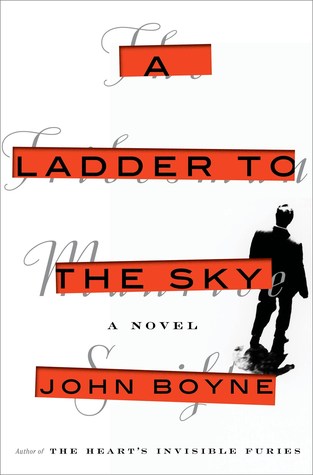
Outwardly, Maurice Swift has it all: he's charismatic, charming and has model good looks. But what's not obvious from looking at him is the turmoil inside his head. He has great ambitions of being a famous author, but he's got no ideas. Lucky for him, he's one manipulative motherfucker.
Getting what he wants is no problem for a man with an ego the size of the universe and no shame. There are lots of ideas out there in the world, but where do authors get their ideas? Maurice just has to find one that will catapult him into the stratosphere of fame he desperately wants. Who owns ideas anyway? This is the dilemma and the great question explored in A Ladder to the Sky.
Maurice has a solution. First, he finds a person to latch onto. It needs to be someone whose step on life's ladder is above his own. This person will unknowingly help him with his plan. But what's in it for them? Maurice gives them whatever they want. After all, when you're charming and not hard to look at, it turns out it's not at all hard to attract whoever you need. Once he finds a suitable target, he uses them for his own gain. He doesn't have to give up too much of himself to get whatever he wants. Because of Maurice's narcissistic tendencies, he doesn't see anything wrong with this arrangement. He gets what he needs and, well, the other person gets the pleasure of his company.
He doesn't give a second thought about what he leaves in his wake. He has no concept of consequences. Feelings and emotions play no part in his setup or his psyche. He's a classic sociopath to the core.
Maurice travels from Europe to America and back and we follow him as he moves from his youthful twenties into his senior years. He leaves victims everywhere he goes. Anyone's fair game, but he chooses very carefully. His sole ambition is personal fulfillment and he won't stop until he reaches his goal. He aims to reach the highest of heights, never thinking beyond the peak - that what goes up must come down.
Who's to tell the difference between ownership and theft? Do our stories belong to us at all? John Boyne weaves these ideas throughout, creating a superb plot and food for thought.
Judge the cover: 4/5 (A word of caution: Don't overdo it on the curiosity front like me. As I was partway through the book, I was dying to know what the wording underneath the cutouts says and inadvertently figured out a major plot development because of it. Lucky for me, this book is so well written, I still loved it, but just be patient. It will be revealed in due course.)






